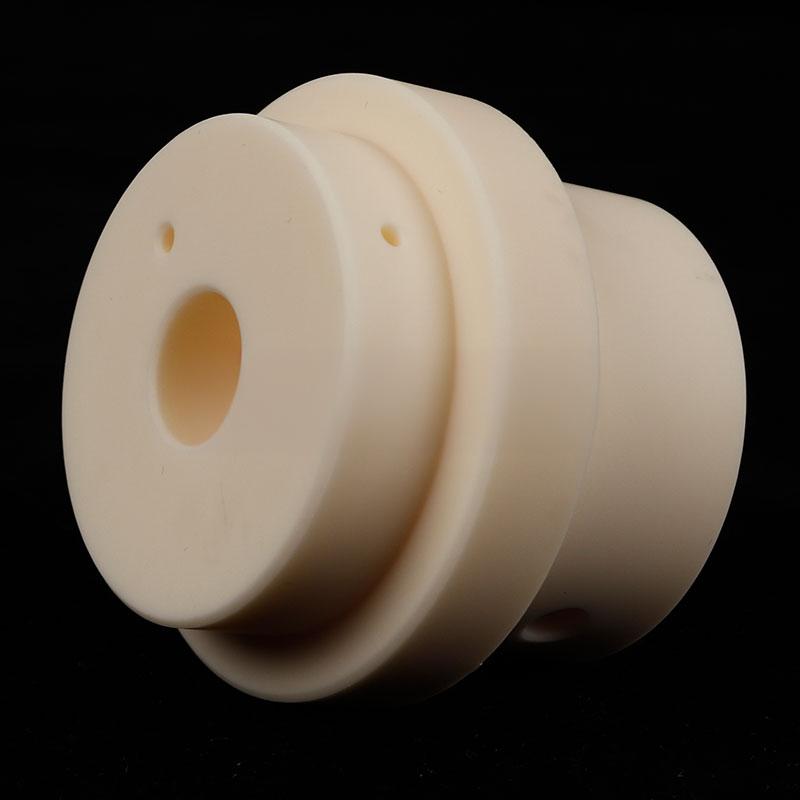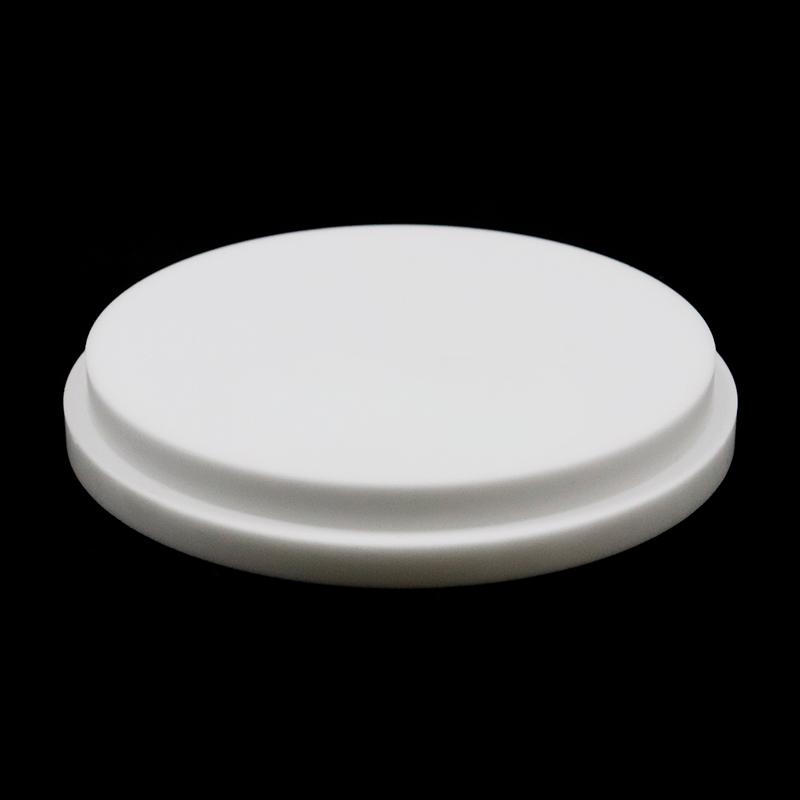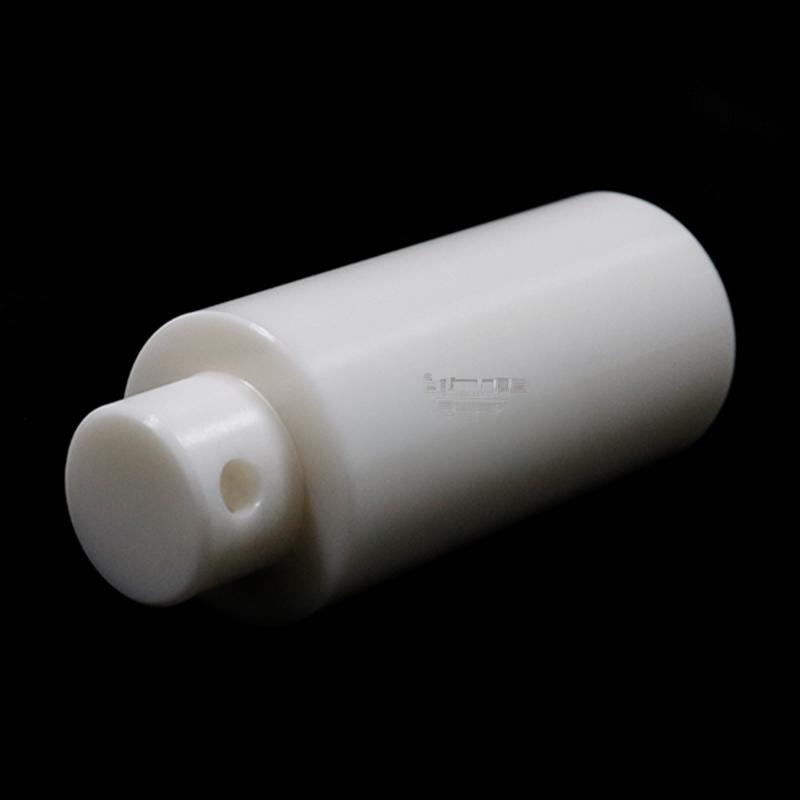Thermal shock resistance of alumina ceramics
In industrial production and cutting-edge technology fields, materials often need to withstand drastic temperature changes – from momentary high temperatures to rapid cooling. This kind of stress caused by rapid temperature changes is the culprit that leads to the failure, cracking, and even fragmentation of many materials. Thermal shock resistance, which refers to the ability of materials to resist thermal shock damage, has become a key indicator for measuring high-performance ceramics. Among them, alumina ceramics occupy a pivotal position in this field due to their excellent comprehensive performance.

What is thermal shock resistance?
Thermal shock resistance essentially describes the ability of a material to resist crack initiation and propagation caused by uneven thermal expansion and contraction when subjected to rapid temperature changes. A simple example is: pouring hot water into a cold glass suddenly, the glass is prone to bursting, which is a typical manifestation of thermal shock damage.
For ceramic materials, their thermal shock resistance is mainly determined by several key parameters: thermal expansion coefficient, thermal conductivity, elastic modulus, fracture toughness, and material strength. Alumina ceramics achieve an excellent balance between these parameters through their unique physical and chemical properties.

Why does alumina ceramic have excellent thermal shock resistance?
The thermal shock resistance of alumina ceramics is not accidental, but stems from its precise material science and microstructure design:
- Moderate coefficient of thermal expansion: Compared to other ceramics, alumina (especially high-purity alumina) has a relatively low coefficient of thermal expansion. This means that when the temperature changes, the magnitude of the size change is relatively small, thereby reducing the generation of internal thermal stress from the source.
- Good thermal conductivity: Aluminum oxide ceramics are excellent conductors of heat. When the surface is subjected to thermal shock, heat can be quickly transferred to the interior of the material, making the overall temperature tend to be balanced and avoiding the huge stress caused by the large temperature difference between the inside and outside.
- High strength and hardness: Alumina ceramics themselves have extremely high mechanical strength and hardness, which enables them to resist the destructive effects of formed thermal stress and is not prone to plastic deformation or cracking.
- Adjustable microstructure: By controlling the purity (such as 96%, 99% alumina), grain size, and sintering process of alumina, its thermal shock resistance can be further optimized. Fine grain structure can often effectively hinder the propagation of cracks.

Product application scenario: solving core problems in extreme environments
With excellent thermal shock resistance, alumina ceramics have solved key problems in many demanding fields:
Semiconductor industry: In the wafer manufacturing process, as electrostatic suction cups and process chamber components, they need to withstand repeated impacts from room temperature to thousands of degrees of plasma in an instant. Aluminum oxide ceramics ensure the dimensional stability and long lifespan of components, solving pollution and shutdown problems caused by component thermal fatigue.
Molten metal processing: used as a thermocouple protection tube, crucible, and pouring port, directly in contact with high-temperature molten steel and aluminum liquid. Its thermal shock resistance avoids cracking due to rapid cooling and heating, ensuring production safety and continuous operation.
High temperature furnace: used as furnace rollers, bearing plates, and various kiln equipment, it can withstand huge thermal cycling stress in the rapid heating and cooling sintering process, with a lifespan far exceeding that of ordinary refractory materials, significantly reducing maintenance costs.
Aerospace: As the lining or observation window of the engine combustion chamber, it needs to withstand the drastic temperature changes at the moment of fuel ignition. Alumina ceramics provide reliable thermal protection and structural integrity.
Laser core components: As the discharge tube and reflection cavity of high-power lasers, they must maintain optical accuracy and mechanical stability under the periodic thermal load generated by laser operation.

Why choose our alumina ceramics?
There are many alumina ceramic products on the market, but our products have unparalleled advantages in thermal shock resistance:
Advanced powder formula: We use high-purity and ultrafine alumina powder, and through unique doping modification technology, further reduce the thermal expansion coefficient of the material and improve its fracture toughness.
Accurate sintering process: We have an internationally leading atmosphere pressure sintering furnace, which can precisely control the sintering curve and obtain a microstructure with uniform grain size and a density of over 99.5%, fundamentally eliminating internal defects as the origin point of thermal shock cracks.
Strict quality inspection: Each batch of products undergoes rigorous thermal shock cycle testing (such as water quenching test) to ensure that their performance meets or even exceeds the most demanding working conditions of customers.
Professional customization capability: We can tailor the most suitable alumina ceramic solution for you based on your specific application scenario (such as maximum working temperature, heating rate, etc.).

Customer real case sharing
A well-known semiconductor equipment manufacturer encountered a problem in the development of its new generation dry etching machine, where the key electrostatic suction cup experienced microcracks during frequent process cycles (from 20 ° C to 400 ° C within 30 seconds), resulting in a decrease in product yield and frequent component replacement.
Challenge: We need a ceramic material that can withstand over 100000 severe thermal cycles without any performance degradation.
Our solution: We provide customized 99.6% high-purity oxide ceramics for it, and by optimizing the grain boundary phase and strictly controlling the grain size, its thermal shock resistance (Δ T critical value) has been improved by about 40% compared to its original supplier products.
Result: Customer testing has shown that using the alumina ceramic components we provide, the service life of the electrostatic suction cup has been extended by more than three times, and the overall equipment utilization rate has increased by 15%, bringing huge economic benefits to customers.

Have you also encountered bottlenecks in your product development or production process due to insufficient thermal shock resistance of materials?
What problems or challenges have you encountered during the use of your product? Welcome to leave a message and communicate with us.
Brudeze Ceramics supplies and sells a wide range of high-quality quartz glass, including alumina ceramics, zirconia ceramics, silicon nitride ceramics, aluminum nitride ceramics, silicon carbide ceramics, boron carbide ceramics, bioceramics, machinable ceramics, etc. We can meet the customization requirements of various ceramic products.
Tags: boron carbide ceramics
PREVIOUS:The average coefficient of linear expansion of alumina ceramics
NEXT:What is the thermal expansion coefficient of 95 alumina ceramics
CATEGORIES
LATEST NEWS
- What is Macor processable g...
- The material properties and...
- The reason for the high pri...
- What are the preparation me...
- Why modify aluminum nitride...
- Thermal conductivity values...
- What is the thermal expansi...
- Thermal shock resistance of...
- The average coefficient of ...
- What is high alumina ceramic
